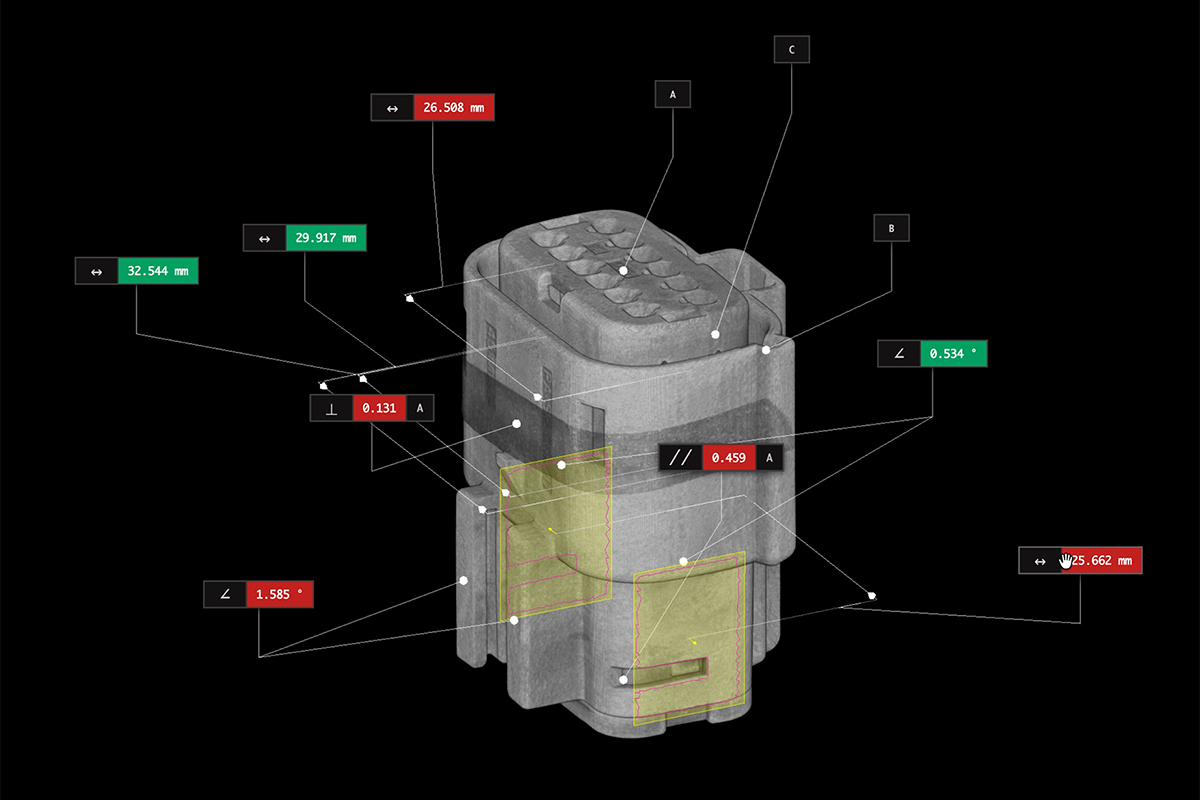Webinar: Inspecting electronics with industrial X-ray CT
On-demand webinar
The complexity and capabilities of modern electronics are constantly pushing the boundaries of the possible. From smartphones that rival the computing power of yesterday's supercomputers to medical devices that sustain life, the intricate dance of circuits, chips, and components within these devices is nothing short of a technological marvel. This complexity, however, carries an increased risk of hidden defects and vulnerabilities that can compromise performance, safety, and reliability. The challenge of ensuring that these sophisticated electronic marvels function flawlessly is a task that requires innovation, precision, and cutting-edge inspection tools like industrial X-ray CT scanning.
Join Lumafield's Jon Bruner and Scott Johnston in this free webinar to discover how industrial CT is transforming the way electrical engineers design, inspect, and produce advanced electronics.
For the electronics industry, CT scanning is unmatched for non-destructive testing (NDT) of critical parts such as PCBs, connectors, and assemblies. CT scanning allows for quick detection of internal defects and imperfections in electronics, such as misaligned components, faulty solder joints, or internal damage, which are not easily visible to the naked eye or traditional inspection techniques.

Industrial CT works according to the same principles as medical CT. Instead of the X-ray source and detector rotating around the patient, Lumafield’s Neptune industrial CT scanner reverses this form factor and rotates the object. This generates a series of two-dimensional radiographs — the black and white images familiar from traditional X-rays. Lumafield’s browser-based Voyager software then reconstructs these radiographs into a three-dimensional model, capturing both internal and external details that can be visualized in a number of ways.
CT scanning also unlocks dimensional analysis and reverse engineering of electronic parts, processes where accurate measurements of complex geometries prove absolutely essential. Not only can the 3D visualization be used to generate CAD models for further examination, Voyager’s CAD Comparison tools make it easy to see how a physical object diverges from its original design. CAD Comparison instantly reveals signs of warping and tool wear, making it easy to tune manufacturing parameters. It can quickly highlight features that are misplaced or missing. And it’s an invaluable tool for failure analysis, pinpointing broken parts and capturing deflection.

In the intricate world of modern electronics, ensuring the reliability and performance of devices can be a daunting task. Lumafield's Neptune scanner and Voyager software provide powerful tools to meet this challenge. With them, electrical engineers are delving deeper into their products, uncovering hidden defects, and understanding their designs more thoroughly. The opportunity to explore the unseen is here, and it's more accessible than you might think.
About the presenter

Scott Johnston is Co-Founder and Head of Engineering at Lumafield. He studied electrical engineering at the Massachusetts Institute of Technology and cut his teeth at Sonos and Color Kinetics before leading engineering teams at Digital Lumens and Formlabs.









